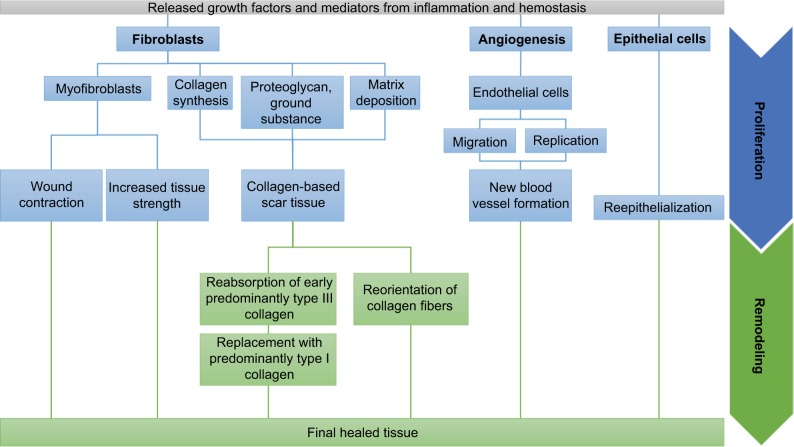Figure 3.
Proliferation and remodeling phases of wound healing.
Notes: The proliferation phase (blue) is a reconstruction step, where cells are working to form granulation tissues and restore a functional skin. Several events are conducted simultaneously: angiogenesis, granulation tissue formation, wound contraction, collagen deposition, and reepithelialization. Activated endothelial cells create new blood vessels by proliferating and migrating toward the source of the angiogenesis stimulus. The epidermal cells proliferate and migrate at the wound edge to initiate wound recovery. Stimulated fibroblasts synthesize collagen, ground substance, and provisional matrix to create a collagen-based scar tissue. Some of them also differentiate into myofibroblast that contracts and induces mechanical stress inside the wound. During the remodeling phase (green), the matrix is turned over and the wound undergoes more contraction by the myofibroblasts. Collagen is also reorganized and reoriented.

